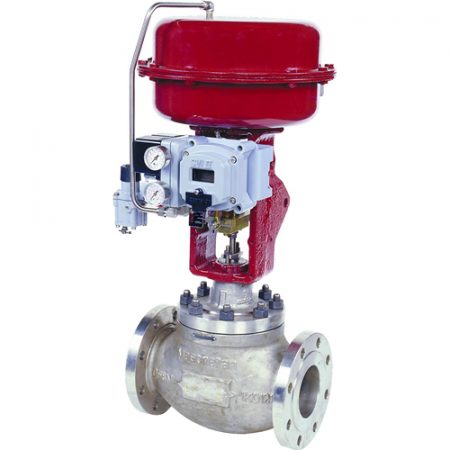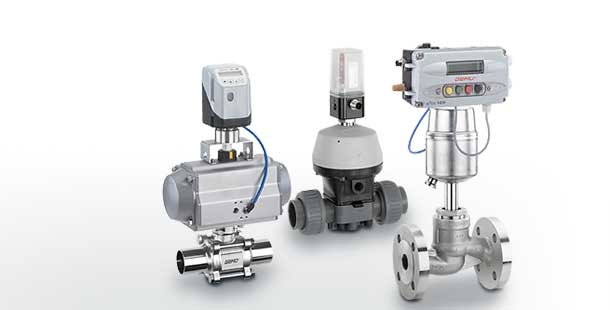Enhancing Functional Effectiveness with Advanced Control Valves
Enhancing Functional Effectiveness with Advanced Control Valves
Blog Article
Achieve Seamless Integration and Control With Quality Structure Automation Controls
In the realm of contemporary building monitoring, the value of quality structure automation controls can not be overstated. Embracing high quality structure automation controls is not simply a matter of convenience but a tactical imperative for companies intending to enhance their facilities' performance and sustainability.

Evolution of Building Automation Controls
Throughout the previous couple of years, the evolution of building automation controls has substantially transformed the method structures are taken care of and run. Constructing automation systems mainly focused on fundamental features such as controlling home heating, ventilation, and air conditioning (HVAC) systems. As innovation progressed, these controls have come to be a lot more sophisticated, enabling for a bigger variety of building systems to be integrated and taken care of centrally.
The evolution of constructing automation controls has seen a change in the direction of more smart systems that can adapt to altering problems in real-time. This adaptability is important for optimizing energy efficiency and making sure resident convenience. In addition, modern building automation controls currently offer attributes such as anticipating maintenance, remote tracking, and data analytics, allowing center managers to make data-driven choices to boost building performance.

Advantages of High Quality Assimilation
The advancement in building automation regulates towards more intelligent systems has underscored the significant advantages of top quality assimilation in maximizing structure operations and improving general effectiveness. Quality combination of developing automation controls uses numerous crucial advantages. First of all, it brings about improved energy effectiveness by permitting different systems to work with each other effortlessly, ensuring optimum efficiency and lowering power wastefulness. High quality integration improves resident comfort and productivity by enabling individualized control over environmental setups like lights, temperature level, and air top quality. This modification can bring about an extra favorable and comfortable working or living atmosphere. Furthermore, top quality integration streamlines upkeep and fixing processes, as all systems are adjoined and can be checked and regulated from a centralized user interface. This central control also provides better exposure and insights into building performance, enabling aggressive upkeep and optimization techniques. Overall, the advantages of quality assimilation in structure automation controls are obvious, providing increased performance, comfort, and operational efficiency.
Boosted Customer Experience and Access
Enhancing individual interaction with structure automation regulates with intuitive style and enhanced access raises the total experience for owners and facility supervisors alike. By focusing on user experience, building automation systems can end up being much more efficient and easy to use. Intuitive user interfaces, clear navigation, and personalized settings empower individuals to connect with the controls easily and effectively.
Accessibility functions play an important duty in making certain that all individuals, including those with handicaps, can utilize the structure automation regulates with ease. Including attributes such as voice commands, tactile switches, and color-contrasted display screens can enhance access and make the controls much more inclusive.
In addition, enhanced individual experience brings about greater user satisfaction, enhanced efficiency, and much better decision-making. Occupants can change environmental settings according to their choices, while center supervisors can successfully take care of and check structure systems - control valves. On the whole, focusing on individual experience and availability in structure automation controls contributes to a much more seamless and effective structure environment for all stakeholders involved
Lasting Practices Via Automation

Moreover, automation can help with the integration of renewable resource sources such as photovoltaic panels or wind turbines into building procedures. By automatically changing power use based on the schedule of renewable power, structures can additionally lower their reliance on non-renewable resources. This smooth integration of sustainable methods not only benefits the setting yet also improves the total operational effectiveness and cost-effectiveness of the structure. Through automation, buildings can align with contemporary sustainability objectives and add to a greener future.
Future Trends in Structure Control Systems
In anticipation of progressing technologies and advancing sustainability practices, the trajectory of building control systems is poised to embrace transformative methods and ingenious services. One prominent more helpful hints fad forming the future of building control systems is the enhanced integration of Artificial Intelligence (AI) and equipment learning. These technologies make it possible for structures to adjust in real-time to transforming problems, enhancing power usage and enhancing comfort for passengers. Furthermore, the Net of Things (IoT) is revolutionizing building control systems by attaching sensors and gadgets to simplify operations and enhance effectiveness.
Another essential fad is the emphasis on cybersecurity procedures to protect versus possible risks to constructing automation systems. As structures end up being more interconnected, making certain robust cybersecurity methods will be important to safeguard delicate information and stop unauthorized access.
In addition, the change towards cloud-based systems is gaining energy, permitting for centralized control and remote access to structure systems. This facilitates easier monitoring, upkeep, and updates, improving the general performance and adaptability of structure control systems. As innovation continues to breakthrough, these fads are anticipated to form the future landscape of structure automation controls, driving advancement and sustainability in the constructed setting.
Final Thought
Finally, constructing automation controls have actually evolved substantially, supplying numerous advantages such as boosted customer experience, availability, and sustainable practices. Quality integration plays a key role in accomplishing seamless control and effective procedure of structure systems. Future patterns in building control systems are likely to focus on more improving automation capabilities for boosted power efficiency and general performance. It is vital for structure proprietors and drivers to prioritize the fostering of high quality building automation regulates to enhance building procedures and accomplish long-term sustainability objectives.
In the realm of contemporary structure management, the significance of high quality structure automation controls can not be overemphasized. Generally, the advancement of building automation controls continues to drive innovation in the building management sector, using new possibilities for creating smarter and much more sustainable buildings.
The development in structure automation controls towards more smart systems has actually underscored the substantial advantages of quality combination visit the site in maximizing structure operations and enhancing total efficiency. Overall, prioritizing user experience and availability in structure automation manages contributes to a much more smooth and efficient building atmosphere for all stakeholders entailed.
It is essential for structure proprietors and operators to focus on the fostering of high quality building automation controls to maximize structure operations and attain lasting read this article sustainability goals. - control valves
Report this page